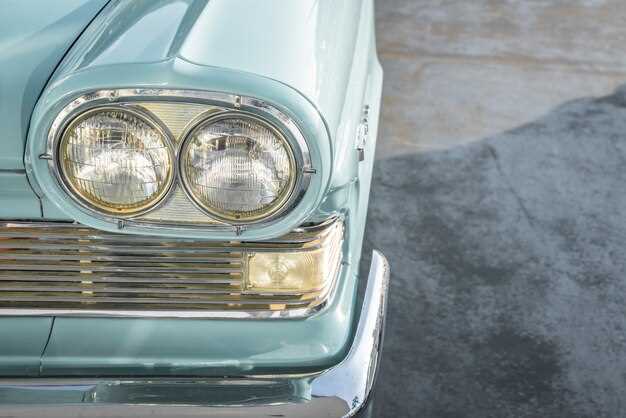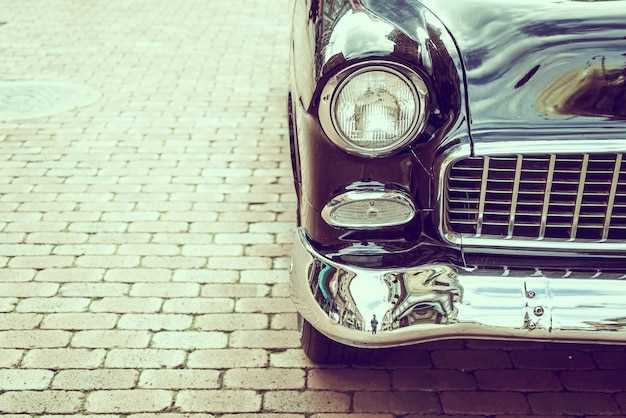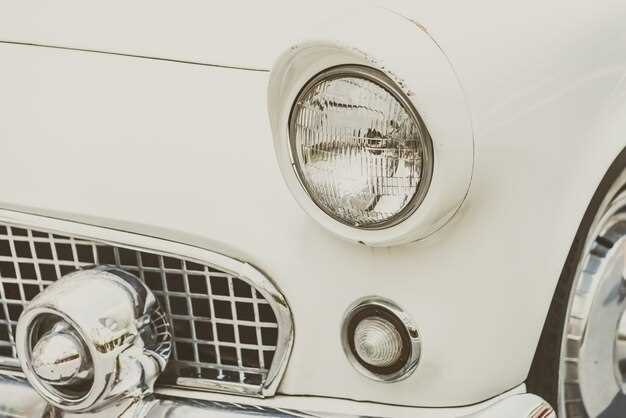Choosing classic cars to add to your collection in 2023 can be both exciting and rewarding. The Ford Mustang, particularly the 1965 model, stands out for its blend of style and performance. With a strong enthusiast community and numerous restoration parts available, it remains a desirable option for collectors.
The Chevrolet Corvette offers a unique combination of power and iconic design. The C2 models, especially the 1963 Sting Ray, capture attention with their sleek lines and impressive performance. Its increasing value and storied history make it a must-have for serious collectors.
If you appreciate classic luxury, the Mercedes-Benz 300SL is a captivating choice. This model’s timeless gullwing doors and exceptional engineering enhance its allure. Owning a 300SL not only provides driving pleasure but also serves as a prestigious addition to any collection.
Lastly, consider the Volkswagen Beetle. Known for its charm and simplicity, it’s an affordable entry point for new collectors. Its enduring popularity and distinct design ensure it remains a beloved classic. Securing a well-maintained model can yield both joy and investment potential.
Top 5 Classic Muscle Cars to Invest in 2023
The 1969 Chevrolet Camaro Z/28 stands out as a smart investment. Its iconic styling and performance make it highly sought after. Look for well-documented models with original parts for optimal value appreciation.
The 1970 Dodge Challenger R/T has gained immense popularity among collectors. With its powerful engines and distinctive design, finding an unmodified version can yield great returns. Focus on models equipped with the HEMI for the best potential.
Consider the 1971 Plymouth Hemi ‘Cuda, a classic that combines rarity and excellence. Only a limited number were produced, making it a gem for enthusiasts. Authenticity and condition are key; original paint and components will significantly enhance value.
The 1968 Ford Mustang GT390 captures attention with its racing heritage. Its connection to pop culture boosts its desirability. Seek out versions with a matching numbers engine, as they hold more value in the collector community.
The 1973 Pontiac Trans Am captured hearts with its performance and style. Limited numbers from this production year increase its appeal. Target models with distinctive decals and factory options for a solid investment opportunity.
Understanding Value Appreciation of Vintage Cars
Vintage cars often experience significant value appreciation due to various factors. Focusing on specific models and their historical significance can yield substantial returns. For instance, classic muscle cars like the Ford Mustang and Chevrolet Camaro have shown steady appreciation in value, particularly models produced between the 1960s and early 1970s.
Market demand plays a critical role in value increase. Limited production runs, unique features, or historical racing pedigree enhance desirability. The Ferrari 250 GTO, for example, has maintained its status as one of the most valuable cars, selling for over $48 million in recent auctions. Collectors recognize the importance of provenance; a documented history can elevate a car’s worth significantly.
Condition and originality also impact value. Cars that maintain their original parts and finishes, or have undergone high-quality restorations, command higher prices. A well-preserved Jaguar E-Type can reach values upwards of $200,000, whereas modified versions typically fetch less. Regular maintenance and preservation practices can contribute to long-term value retention.
Age remains a fundamental factor. Generally, the older a car is, the more it appreciates, especially if registered as a collector’s item. The 1967 Chevrolet Corvette, for example, has seen a price increase of over 300% in the past ten years in good condition.
| Car Model | Appreciation Rate (10 Years) | Current Value |
|---|---|---|
| Ford Mustang (1966) | 150% | $55,000 |
| Chevrolet Camaro (1969) | 200% | $70,000 |
| Jaguar E-Type (1961) | 100% | $200,000 |
| Ferrari 250 GTO | 400% | $48,000,000 |
Investing in vintage cars requires research. Following auction trends, attending car shows, and connecting with other collectors will provide insights into what vehicles are gaining traction. Actively participating in car clubs adds value through networking, leading to better opportunities for sourcing desirable models. Through informed decisions, collectors can maximize their investment potential over time.
Key Features to Look for in a Classic Car
Prioritize the vehicle’s condition. Seek cars with minimal rust, good body alignment, and intact paintwork. Pay attention to the undercarriage for any signs of decay, which can be costly to repair.
Verify the authenticity of the car. Documented history, including original parts and service records, enhances its value. Matching numbers–where the engine and chassis numbers align with the original specification–are crucial for collectors.
Investigate the mechanical performance. A classic car should run smoothly without excessive noise or vibration. Test drives reveal a lot; ensure the engine starts cleanly, the transmission shifts seamlessly, and brakes respond effectively.
Assess the interior for comfort and originality. Look for well-preserved upholstery and working gauges. Vintage features like the steering wheel or dashboard design should reflect the period accurately, enhancing collector appeal.
Check for aftermarket modifications. Some additions may decrease value, while others can enhance performance. Assess whether modifications align with the collector’s market preferences in your region.
Research market trends for the specific model. Limited editions or cars with historical significance often appreciate more rapidly than others. Understanding buyer demand can guide you toward a wise investment.
Restoration Tips for Classic Car Collectors
Begin with a thorough assessment of your classic car’s condition. Document every detail using photographs and written notes. This helps track progress and identify problem areas. Focus on rust spots; address them before they spread.
Prioritize sourcing authentic parts. Original components enhance value and authenticity. Research reputable suppliers and consider joining car clubs for recommendations. Some clubs offer shared resources, including parts exchanges.
Develop a restoration plan. Break it down into manageable phases, such as bodywork, engine, and interior. This approach prevents feeling overwhelmed and allows for budget adjustments during the process.
Work with experienced professionals when needed. While DIY offers satisfaction, expert mechanics ensure critical systems are handled correctly. Seek specialists for complex tasks like engine rebuilds and bodywork.
Utilize online forums and communities. Engaging with fellow enthusiasts can provide valuable insights and troubleshooting tips. Learning from others’ experiences saves time and resources.
Keep detailed records of all work performed. Maintain receipts, invoices, and service logs. This documentation reinforces the car’s history and investment value, benefiting future potential buyers.
Finally, understand the market dynamics. Stability in classic car values shifts over time; staying informed about trends can guide your restoration decisions. Aim for quality, but don’t overlook the potential for enjoyment during the restoration process.
Top Classic Car Shows and Auctions to Attend This Year
This year, don’t miss the Pebble Beach Concours d’Elegance, scheduled for August 20-27. It showcases the world’s most prestigious classic cars, with participants from every corner of the globe. Engage with other collectors and admire rare automobiles in a stunning seaside setting.
The Goodwood Revival running from September 8-10 is another must-see. This event not only features classic car racing but also immerses attendees in the 1940s and 1950s culture. Experience the thrill of historic races and the atmosphere of the golden age of motoring.
Consider attending the Hershey National Antique Auto Club of America (AACA) Fall Meet on October 5-8. This gathering is popular among enthusiasts seeking to buy, sell, or simply admire vintage vehicles. The flea market offers countless parts and memorabilia, perfect for any collector.
In terms of auctions, Barrett-Jackson Scottsdale in January is a premier event. This auction attracts serious bidders and offers an array of American classic cars. Don’t miss the chance to see iconic models and potentially find a gem for your collection.
RM Sotheby’s offers another exciting auction at Amelia Island on March 10-11. Known for its high-value classics, this event will feature a selection of meticulously curated cars, compelling both seasoned collectors and newcomers alike.
Finally, bring your calendar for the Las Vegas Classic Car Auction by Mecum in June. This auction is renowned for its fast-paced environment and diverse lineup of vehicles. You’ll find everything from muscle cars to exotic models, making it a thrilling experience.
Insurance and Maintenance Considerations for Classic Cars
Before acquiring a classic car, ensure you have comprehensive insurance tailored for these vehicles. Regular auto insurance policies often fall short, so look for specialized classic car insurance. These policies typically consider the vehicle’s value and restrict its use to leisure driving. Compare quotes from providers like Hagerty, Grundy, and Classic Auto Insurance for the best coverage options.
Maintenance plays a critical role in preserving the value and performance of your classic car. Adhere to the following recommendations:
- Regular Inspections: Schedule inspections and servicing every six months. Focus on crucial components such as the engine, brakes, and suspension.
- Use Quality Parts: Source original or high-quality replacement parts. This approach protects the vehicle’s authenticity and longevity.
- Fluid Changes: Change oil, coolant, and brake fluid regularly to prevent wear and tear. Stick to manufacturer-recommended fluids.
- Storage: Use a climate-controlled garage to store your classic car. Avoid humidity and extreme temperatures to preserve the paint and interiors.
Consider joining classic car clubs or forums. These communities provide valuable insights and connect you with skilled mechanics familiar with vintage models. Share your maintenance experiences and seek advice to enhance your knowledge and skills.
Document all maintenance work and repairs meticulously. Keeping records increases the car’s resale value and provides potential buyers with confidence in its upkeep.
By prioritizing specialized insurance and regular maintenance, you ensure both protection and enjoyment of your classic car investment.






